Prep: 15 mins
Cook: 30 mins
Total: 45 mins
Servings: 6 servings
Yield: 6 servings
There is a strange phenomenon surrounding two-word recipe titles in that the simplicity somehow results in the most delicious marriage of textures and flavors: milk and cookies, spaghetti and meatballs, and of course, biscuits and gravy.
The History of Biscuits and Gravy
Historians believe this classic dish has been gracing tables since the late 1800’s in southern Appalachia. Biscuits and gravy was popular with saw mill workers who were in need of hearty, bone-sticking food to propel them through the long and strenuous workday (hence the name sometimes given to this kind of gravy: sawmill gravy).
This is around the same time that baking powder became available. Before baking powder, biscuits were leavened by a lengthy beating, which helped introduce air into the dough. The resulting biscuits, however, were not light, fluffy, or flaky as we expect our biscuits to be today. They were smaller, flatter, and rather hard and tended to be served with thinly sliced country ham.
What’s more, beaten biscuits, though they sound austere, were not a standard item on the tables of the poor or working class. In fact, they were something of a status symbol for the wealthy, signifying that they had hired or enslaved cooks who could do the backbreaking work of making these biscuits.
The Best Flour for Biscuits
By 1883, White Lily would come on the market and their soft, winter wheat flours would serve as the final ingredient in the biscuit we know today. White Lily self-rising flour is nine percent protein (all-purpose flour hovers around 12 percent protein and bread flour around 14 percent); a lower protein content means less gluten development, which makes for a more tender end result. White Lily is widely available in the South, but you can also purchase it online.
For Tender Biscuits, Handle the Dough With Care
While the type of flour used to make biscuits is important, how you handle the dough matters, too. You don’t want to overwork your biscuits; warm dough will melt the butter too quickly and make tough versus flaky layers. In this recipe, we fold the dough over on itself a couple times to create flaky layers but not enough to make the dough tough.
How To Make the Best Sausage Gravy
Once your biscuits are in the oven, you have the perfect amount of time for gravy-making. Depending on the sausage you use, you may need to add a touch more fat to the pan after cooking the sausage to make the roux. I love bacon grease for its smoky flavor, but butter or oil will also work.
Using a cast-iron skillet to make the gravy will help to keep your gravy warm while your biscuits finish and cool, but you can always add a splash more milk if it gets too thick while you’re waiting.
How To Serve Biscuits and Gravy
When I ate biscuits and gravy growing up, it was served as a meal in and of itself, but you could serve this with hash browns, poached eggs, or a simple fruit salad. You know, for the vitamins.
Tips for Making Biscuits and Gravy
- White Lily self-rising flour is the best flour for making these biscuits, period. However, you can still get good results from using all-purpose flour. To turn all-purpose flour into self-rising flour, whisk 1 1/2 teaspoons baking powder and 1/4 teaspoon fine salt into each cup of all-purpose flour. For this recipe, you'll need 2 1/2 cups all-purpose flour mixed with 1 tablespoon plus 3/4 teaspoon baking powder and 1/2 teaspoon plus 1/8 teaspoon fine salt.
- Freezing the butter and grating it into the flour accomplishes two things: it means you simply have to mix the grated butter into the flour without worrying about the size of the butter pieces; and it helps you keep the butter cold, which is crucial for tender, flaky layers.
- Folding the dough over on itself a couple times gives the finished biscuits flaky layers.
- Take care not to roll the dough too thin. Your biscuits will be taller and more appetizing if you roll the dough to 3/4 inch thickness.
- Do not twist the biscuit cutter when cutting out the dough. Doing so inhibits the biscuits' rise.
Ingredients
For the Biscuits:
-
2 1/2 cups (298 grams) self rising flour (preferably White Lily), plus more for dusting
-
1 teaspoon granulated sugar
-
1/2 cup (4 ounces; 113 grams) unsalted butter, frozen
-
1 cup whole buttermilk
-
1 tablespoon unsalted butter, melted
For the Sausage Gravy:
-
1 pound pork breakfast sausage
-
1 tablespoon bacon drippings or unsalted butter
-
1/4 cup (28 grams) all-purpose flour
-
3 cups whole milk
-
1 teaspoon ground black pepper
-
1/4 teaspoon salt
Steps to Make It
-
Gather the ingredients.
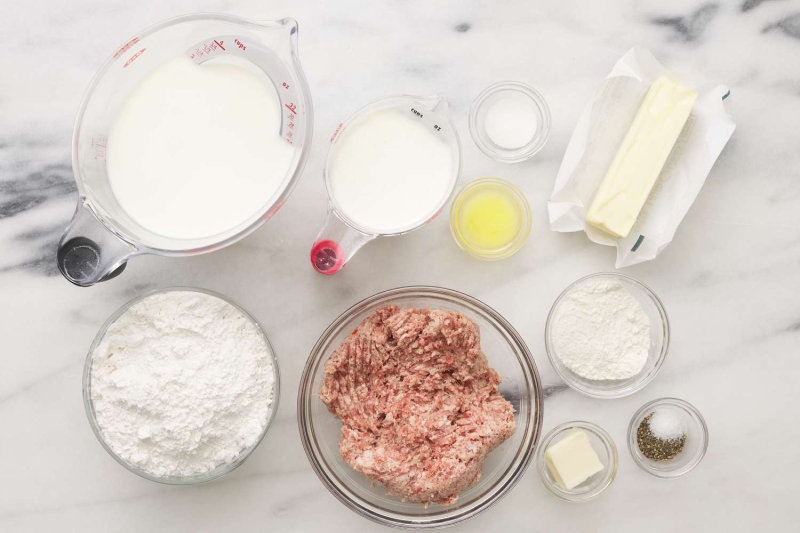
-
Preheat the oven to 450 F. Line a rimmed baking sheet with parchment paper and set aside.
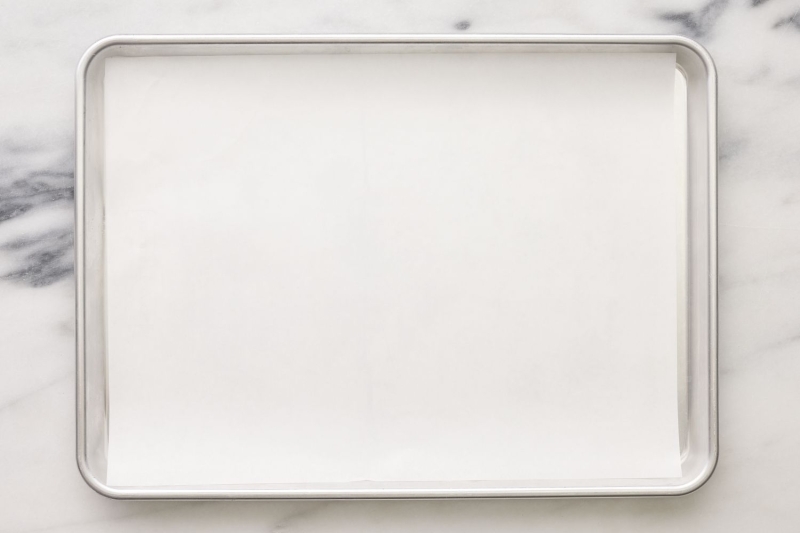
-
Whisk together the flour and sugar in a large bowl. Grate the frozen butter into the flour mixture using the large holes of a box grater.
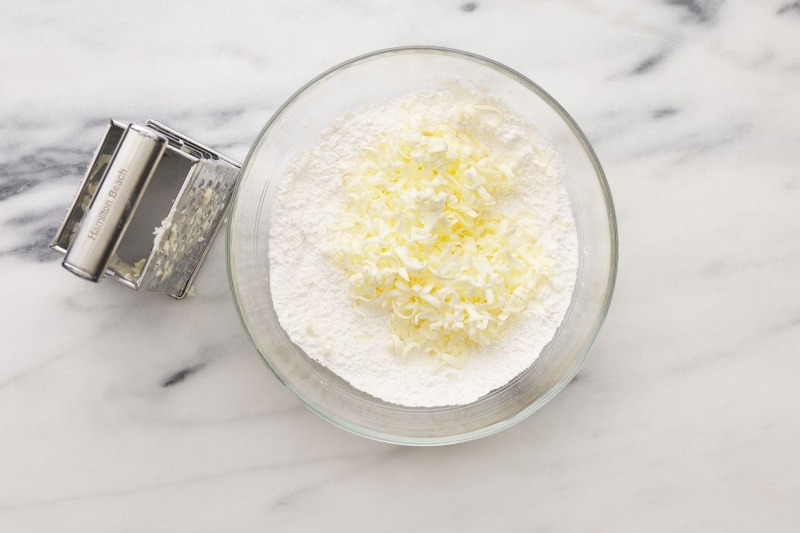
-
Toss to coat the butter in flour, then gently use your fingertips to pinch and rub the butter into the flour mixture until the butter is evenly distributed and is the size of small beads.
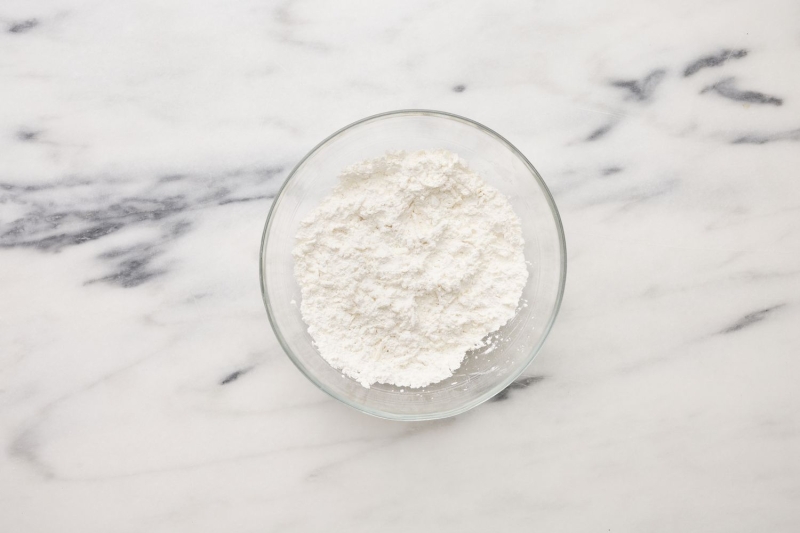
-
Stir in the buttermilk until evenly moistened and the dough is shaggy.
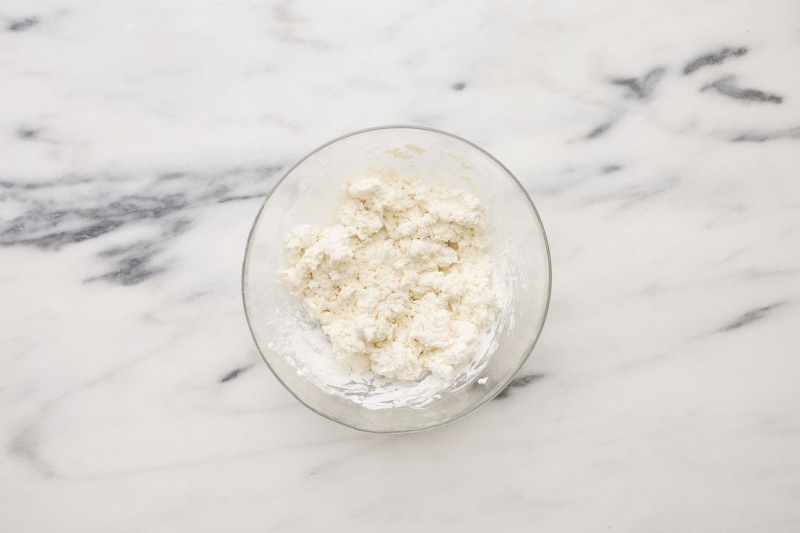
-
Turn out the dough onto a well-floured surface and knead until it comes together, about 5-8 kneads. Dust the top of the dough with additional flour, and roll out to 1/2-inch thick.
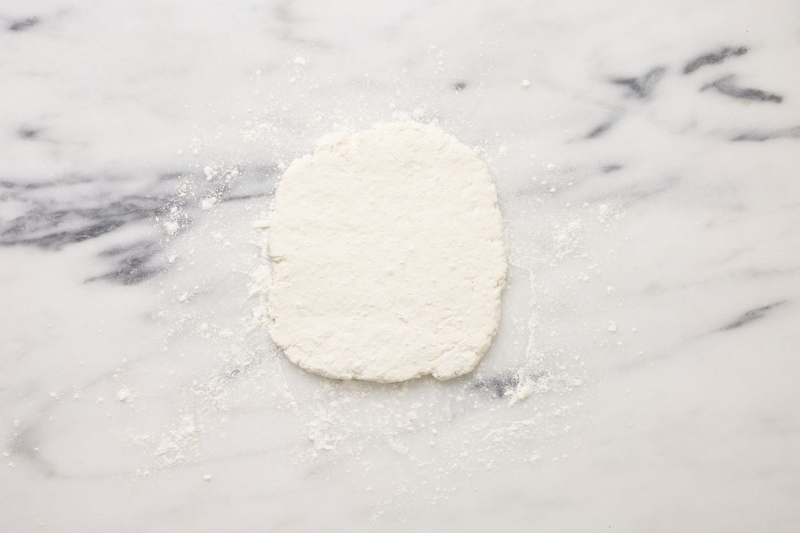
-
Using a bench scraper, fold the dough in half over itself, then roll out again to 1/2-inch thickness. Fold in half one more time, and roll to 3/4-inch thickness.

-
Using a 2 1/2-inch round cutter, cut out 12 dough circles, re-rolling the dough scraps once (do not twist the cutter). Transfer the dough circles to the prepared baking sheet.

-
Bake in the preheated oven until the biscuits are golden brown, 12 to 15 minutes. Remove the biscuits from the oven and immediately brush the tops of the biscuits with the melted butter. Let cool on the baking sheets slightly, 3 to 5 minutes.
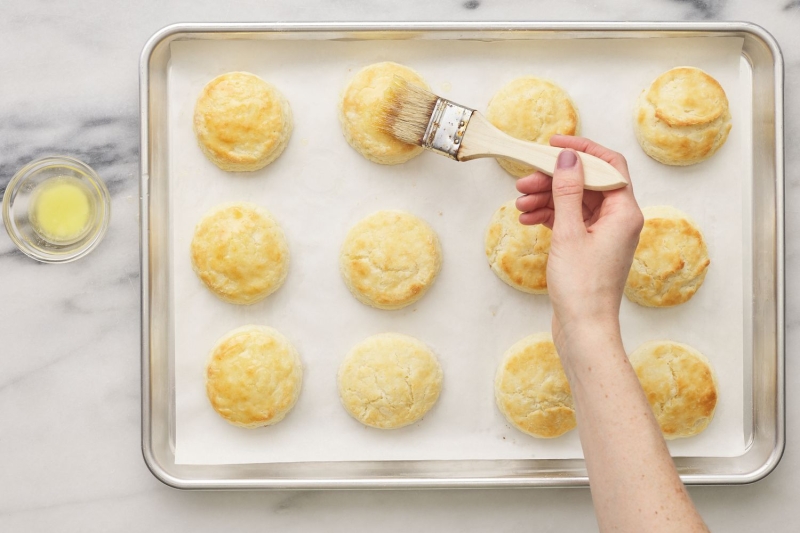
Make the Sausage Gravy and Serve
-
While the biscuits are in the oven, prepare the sausage gravy. Heat a large cast-iron skillet over medium-high. Add the sausage and cook, breaking it up into small crumbles with a wooden spoon, until browned and no longer pink, 5 to 6 minutes.
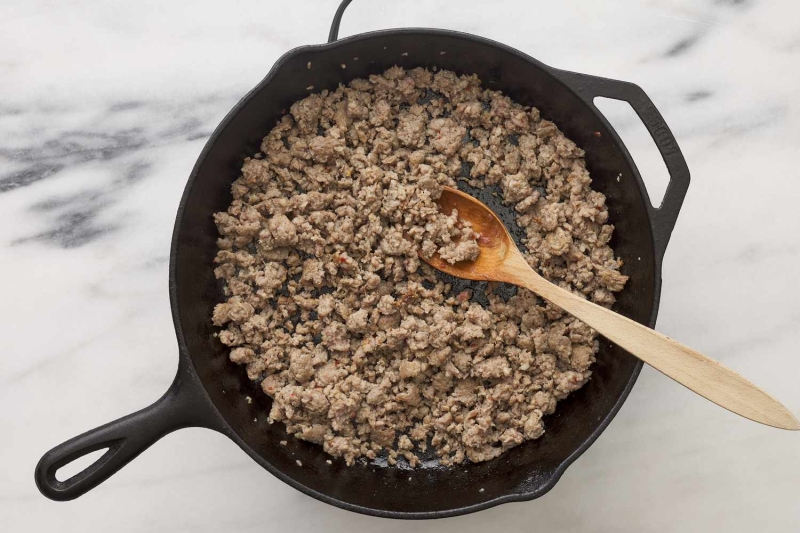
-
Reduce the heat to medium, add the bacon drippings or butter, and cook, stirring occasionally, until melted. Sprinkle the flour over the sausage, and cook, stirring constantly, until the flour coats the sausage, about 1 minute.
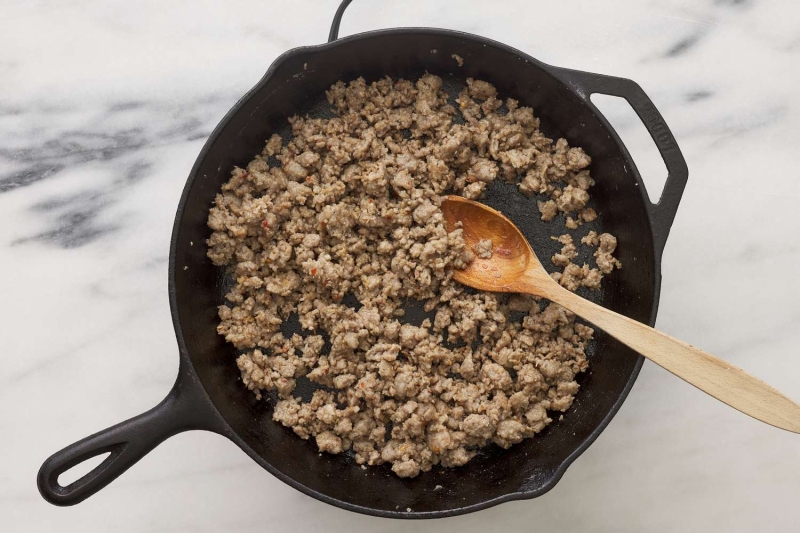
-
Slowly and gradually pour in the milk, stirring constantly. Bring to a simmer over medium; cook, stirring often, until the gravy is thickened, 4 to 5 minutes. Stir in pepper and salt. Turn off the burner, leaving the pan on the warm burner to keep warm, stirring occasionally.

-
For each biscuit, split the biscuit in half and spoon 2/3 cup gravy over top of biscuit halves. Serve immediately.

How To Store Biscuits and Gravy
While the biscuits are best right out of the oven, you can store leftover biscuits in an airtight container at room temperature for up to 3 days. Refrigerate leftover gravy in an airtight container for up to 2 days. Reheat biscuits in a hot oven and gravy in a small saucepan over medium heat. You will need to add a splash of milk to loosen the gravy and adjust its consistency.
You can also place cut-out unbaked biscuits on a parchment-lined sheet pan and freeze them. Once frozen solid, transfer the biscuits to a freezer bag and store up to 3 months. Bake the biscuits straight from frozen, as directed, adding a few extra minutes to the baking time.
Recipe Variations
- For a spicy gravy, use hot pork breakfast sausage, add 1/2 teaspoon crushed red pepper (add with the flour), and finish the gravy with a splash of vinegar-based hot sauce such as Tabasco or Louisiana.
- For an herbed gravy, add 1 teaspoon finely chopped garlic and 1 tablespoon finely chopped fresh herbs (rosemary, sage, and thyme would work well) — add once the sausage is cooked, before adding the bacon drippings.
- To make square biscuits, roll out dough to 5- x 8-inch rectangle, use a sharp knife to trim the edges to form a perfect rectangle (trimmed edges will help the biscuits rise taller in the oven). Cut dough into 6 even pieces, about 2 x 2 1/2 inches each.
| Nutrition Facts | |
|---|---|
| Servings: 6 | |
| Amount per serving | |
| Calories | 713 |
| % Daily Value* | |
| Total Fat 46g | 58% |
| Saturated Fat 22g | 109% |
| Cholesterol 132mg | 44% |
| Sodium 1394mg | 61% |
| Total Carbohydrate 51g | 18% |
| Dietary Fiber 2g | 6% |
| Total Sugars 10g | |
| Protein 25g | |
| Vitamin C 0mg | 0% |
| Calcium 368mg | 28% |
| Iron 4mg | 20% |
| Potassium 552mg | 12% |
| *The % Daily Value (DV) tells you how much a nutrient in a food serving contributes to a daily diet. 2,000 calories a day is used for general nutrition advice. | |


